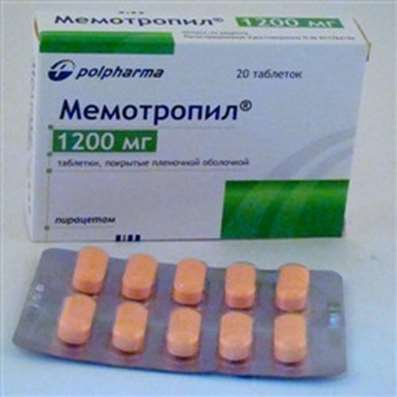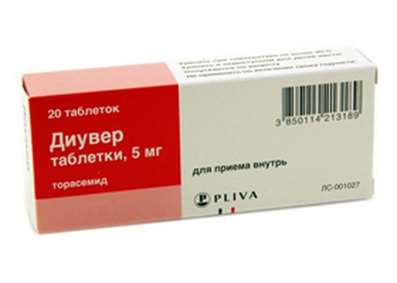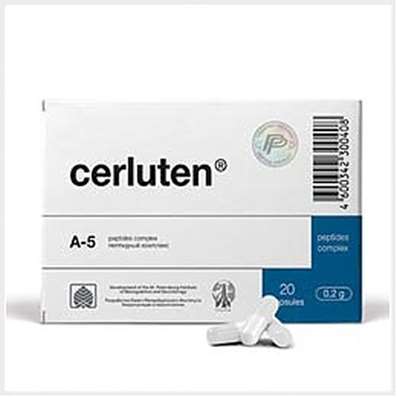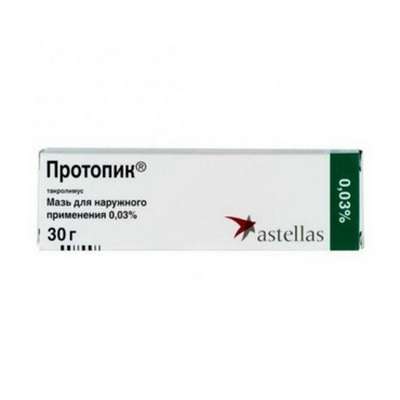Instruction for use: Bisoprolol
I want this, give me price
Trade name of the drug – Aritel, Aritel Cor, Bidop, Bidop Cor, Byol, Biprol, Bisogamma, Bisocard, Bisomor, bisoprolol, bisoprolol Alkaloid, Bisoprolol-OBL, Bisoprolol-LEKSVM, Bisoprolol-Luga, Bisoprolol-Prana, Bisoprolol-ratiopharm, Bisoprolol-NW, Bisoprolol-Teva, bisoprolol fumarate. Bisoprolol fumarate-Farmaplant, Konkor, Konkor Cor, Corbis, Kordinorm, Kordinorm Cor, Coronal, Niperten, Tirez
The Latin name of the substance Bisoprolol
Bisoprololum (genus. Bisoprololi)
Chemical rational name: 1- [4 - [[2- (1-Methylethoxy) ethoxy] methyl] phenoxy] -3 - [(1-methylethyl) amino] -2-propanol (and as fumarate)
Gross formula C18H31NO4
Pharmacotherapeutic group: Beta-blockers
The nosological classification (ICD-10)
I10 Essential (primary) hypertension: hypertension; Arterial hypertension; Arterial hypertension crisis course; Essential Hypertension; Essential hypertension; Essential hypertension; Essential hypertension; Essential hypertension; Primary hypertension; Arterial hypertension, complications of diabetes; The sudden increase in blood pressure; Hypertensive disorders of blood circulation; hypertensive condition; hypertensive crises; arterial Hypertension; malignant Hypertension; Hypertonic disease; hypertensive crises; accelerated hypertension; malignant hypertension; The aggravation of hypertensive disease; Transient hypertension; Isolated systolic hypertension
I15 Secondary hypertension: Arterial hypertension, complications of diabetes; hypertension; The sudden increase in blood pressure; Hypertensive disorders of blood circulation; hypertensive condition; hypertensive crises; hypertension; arterial Hypertension; malignant Hypertension; hypertensive crises; accelerated hypertension; malignant hypertension; The aggravation of hypertensive disease; Transient hypertension; hypertension; Arterial hypertension; Arterial hypertension crisis course; renovascular hypertension; Hypertension symptomatic; Renal hypertension; Renovascular hypertension; renovascular hypertension; Symptomatic hypertension
I20 Angina [angina]: Heberden disease; Angina pectoris; The attack of angina pectoris; recurrent angina; Spontaneous angina; Stable angina pectoris; Angina rest; Angina progressing; Angina mixed; Angina spontaneous; stable angina; Chronic stable angina; Angina Syndrome X
I25 Chronic ischemic heart disease: Coronary heart disease on the background of hypercholesterolemia; Coronary heart disease is a chronic; Coronary heart disease; Stable coronary artery disease; Percutaneous transluminal angioplasty; Myocardial ischemia, arteriosclerosis; Recurrent myocardial ischemia
I50.0 Congestive heart failure: anasarca heart; Decompensated congestive heart failure; Congestive heart failure; Congestive heart failure with high afterload; Congestive chronic heart failure; Cardiomyopathy with severe chronic heart failure; Compensated chronic heart failure; Swelling with circulatory failure; Edema of cardiac origin; Swelling of the heart; Edematous syndrome in diseases of the heart; Edematous syndrome in congestive heart failure; Edematous syndrome in heart failure; Edematous syndrome in heart failure or liver cirrhosis; right ventricular failure; Congestive Heart Failure; Heart failure stagnant; Heart failure with low cardiac output; Heart failure is a chronic; Cardiac edema; Chronic decompensated heart failure; Chronic Congestive Heart Failure; Chronic heart failure; Change of liver function in heart failure
CAS code 66722-44-9
Description of Bisoprolol
Cardioselective β1-blocker, has no intrinsic sympathomimetic and membrane stabilizing activity. Bisoprolol fumarate - a white crystalline powder. It is soluble in water, methanol, ethanol, chloroform. Molecular Weight - 766.97.
Pharmacological Properties of Bisoprolol
Pharmachologic effect - antianginal, hypotensive, anti-arrhythmic.
Pharmacodynamics
Selective β1-blocker, without its own sympathomimetic activity, has no membrane stabilizing action. He has only a negligible affinity for the β2-adrenoceptor smooth muscles of the bronchi and vessels as well as the β2-adrenergic receptors, involved in the regulation of metabolism. Therefore, bisoprolol generally does not affect the airway resistance and metabolic processes that are involved in the β2-adrenergic receptors.
The selective effect of bisoprolol on β1-adrenergic receptors is preserved outside the therapeutic range.
Bisoprolol does not have a pronounced negative inotropic effect. Its maximum effect is achieved within 3-4 hours after ingestion. Even with bisoprolol 1 once daily its therapeutic effect is maintained for 24 hours through a 10-12 hour of T1 / 2 of the blood plasma. As a rule, the maximum reduction in blood pressure is achieved within 2 weeks after initiation of treatment.
Bisoprolol reduces the activity simpatoadrenalovoj system by blocking the β1-adrenergic receptors of the heart.
For a single ingestion in patients with coronary artery disease with no evidence of heart failure bisoprolol slows heart rate, reduce heart stroke volume and, as a consequence, reduces the ejection fraction and myocardial oxygen demand. When long-term therapy initially elevated peripheral vascular resistance is reduced. Reducing the activity of renin in blood plasma is considered as one of the components of the antihypertensive action of β-blockers.
Pharmacokinetics
Suction
Bisoprolol almost completely (> 90%) absorbed from the gastrointestinal tract. Due to its low bioavailability metabolization during the initial passage through the liver ( "10%) is approximately 90% after oral administration. Food does not affect the bioavailability. Bisoprolol demonstrates linear kinetics, and its plasma concentration is proportional to the dose in the range of 5 to 20 mg. Plasma Tmax is 2-3 hours.
Distribution
Bisoprolol is distributed widely enough. Vd is 3.5 L / kg. Communication plasma protein reaches about 30%.
Metabolism
It is metabolized by oxidative way without subsequent conjugation. All metabolites are polar (water soluble) and the kidneys. Major metabolites detected in plasma and urine did not exhibit pharmacological activity. Data obtained from experiments with human liver microsomes under conditions in vitro, suggest that bisoprolol is metabolized mainly via isoenzyme CYP3A4 (about 95%) and CYP2D6 isozyme plays only a minor role.
breeding
The clearance of bisoprolol is determined by the equilibrium between the renal excretion as unchanged ( »50%) and metabolism in the liver (" 50%) to metabolites, which are also excreted by the kidneys. Total clearance was 15 L / hour. T1 / 2 - 10-12 h.
Pharmacokinetics in different patient groups
There is no information on the pharmacokinetics of bisoprolol in patients with chronic heart failure and simultaneous impaired liver or kidney function.
Application of the substance Bisoprolol
Arterial hypertension; Coronary heart disease: stable angina; chronic heart failure.
Contraindications for Bisoprolol
Hypersensitivity to bisoprolol; congestive heart failure; Chronic heart failure decompensation requiring of inotropic therapy; cardiogenic shock; AV blockade II and III level without pacemaker; syndrome sick sinus; sinoatrial block; severe bradycardia (heart rate <60 beats / min.); severe hypotension (SBP <100 mm Hg); severe bronchial asthma or chronic obstructive pulmonary disease; The expressed disturbances of peripheral arterial circulation or Raynaud's syndrome; pheochromocytoma (without the simultaneous use of α-blockers); metabolic acidosis; age 18 years (insufficient efficacy and safety data in this age group).
Restrictions to application
Carrying desensitizing therapy; Prinzmetal angina; hyperthyroidism; diabetes type 1 and diabetes with considerable fluctuations in blood glucose concentration; AV block of I degree; severe renal impairment (Cl creatinine <20 ml / min); severe liver function; psoriasis; restrictive cardiomyopathy; congenital heart defect or heart valve with severe hemodynamic impairment; chronic heart failure, myocardial infarction within the last 3 months; strict diet.
Pregnancy and breast-feeding
In pregnancy, bisoprolol should be advised to use only if the benefit to the mother outweighs the risk of side effects in the fetus and / or the child.
Typically, β-blockers decrease the blood flow in the placenta and can affect fetal development. It is necessary to monitor blood flow in the placenta and uterus, as well as to observe the growth and development of the unborn child and in case of occurrence of adverse events in relation to pregnancy and / or fetus to take alternative therapies with a proven safety profile application during pregnancy. It is necessary to carefully examine the newborn: the symptoms of hypoglycemia and bradycardia may occur during the first 3 days of life.
Data on the allocation of bisoprolol into breast milk is not. Therefore, taking this drug is not recommended for women during breastfeeding. If his reception during lactation is necessary, breast-feeding should be discontinued.
Category effects on the fetus by FDA - C.
Side effect of Bisoprolol
The frequency of adverse reactions listed below was determined according to the following criteria recommended by WHO: very common (≥1 / 10); commonly (≥1 / 100, <1/10); uncommon (≥1 / 1000, <1/100); rare (≥1 / 10,000, <1/1000); very rare (<1/10000).
From the nervous system: often - golovokruzhenie1, headache bol1; rare - loss of consciousness.
On the part of the psyche: rarely - depression, insomnia; rarely - hallucinations, nightmares.
From a sight organ: seldom - a decrease in lacrimation (to consider when wearing contact lenses); very rarely - conjunctivitis.
On the part of the ear and labyrinth disorders: rarely - a violation hearing.
From the CCC: very often - bradycardia (in patients with CHF); often - current worsening heart failure symptoms (patients with CHF), cooling sensation or numbness in the extremities, marked reduction in blood pressure, especially in patients with CHF; rarely - a violation of AV conduction, bradycardia (in patients with hypertension or angina), worsening of heart failure symptoms flow (in patients with hypertension or angina), orthostatic hypotension.
The respiratory system, organs, thoracic and mediastinal disorders: rarely - bronchospasm in patients with asthma or airway obstruction in history; rarely - allergic rhinitis.
On the part of the digestive tract: often - nausea, vomiting, diarrhea, constipation.
On the part of the liver and biliary tract: rarely - hepatitis.
On the part of the musculoskeletal and connective tissue disorders: rarely - muscle weakness, muscle cramps.
Skin and subcutaneous tissue disorders: rarely - hypersensitivity reactions, such as itching, skin rash, redness of the skin; very rare - alopecia.
Exacerbate psoriasis current symptoms or induce psoriasis-like rash may be β-blockers.
From the genitals and breast: rarely - a violation of potency.
General disorders and administration in place: often - asthenia (patients with CHF), higher utomlyaemost1; infrequently - asthenia (patients with arterial hypertension or angina).
Laboratory and instrumental data: rarely - increased triglyceride concentrations and the activity of ACT and ALT in blood plasma.
1 In patients with hypertension or angina, these symptoms most often occur at the start of treatment. Generally, these effects are mild and are usually within 1-2 weeks after starting treatment.
Interaction
On the efficacy and tolerability of the bisoprolol may affect concomitant use of other drugs. Such interaction may also occur in those cases when the two drugs taken after a short time.
Not recommended combinations
Treatment of chronic heart failure. Antiarrhythmic drugs of class I (eg quinidine, disopyramide, lidocaine, phenytoin, flecainide, propafenone), while the use of bisoprolol may reduce AV conduction and myocardial contractility.
All indications for the use of bisoprolol. CCB verapamil type and to a lesser extent diltiazem while the use of bisoprolol may lead to a decrease in myocardial contractility and AV conduction disorders. In particular, in / with the introduction of verapamil in patients receiving β-blockers may lead to severe hypotension and AV blockade. Antihypertensive drugs of the central action (such as clonidine, methyldopa, moxonidine, rilmenidine) may lead to a slowing of the heart rate and reducing cardiac output and to vasodilatation due to the reduction of the central sympathetic tone. Abrupt withdrawal, particularly to cancellation β-blockers may increase the risk of rebound hypertension.
Combinations requiring special care
Treatment of hypertension and angina. Class I antiarrhythmics (eg quinidine, disopyramide, lidocaine, phenytoin, flecainide, propafenone), while the use of bisoprolol may reduce AV conduction and myocardial contractility.
All indications for the use of bisoprolol. BPC - dihydropyridine derivatives (eg, nifedipine, felodipine, amlodipine) - while the use of bisoprolol may increase the risk of hypotension. In patients with heart failure cannot eliminate the risk of further deterioration of the contractile function of the heart.
Class III antiarrhythmics (eg amiodarone) may increase the violation of AV conduction.
The action of β-blockers for topical application (eg eye drops for glaucoma treatment) may enhance the systemic effects of bisoprolol (lowering blood pressure, slowing of the heart rate).
Parasympathomimetics while the use of bisoprolol may increase the violation of AV conduction and increase the risk of bradycardia.
Hypoglycemic effect of insulin or hypoglycemic drugs for oral administration can be enhanced. Symptoms of hypoglycemia, particularly tachycardia, may be masked or suppressed. Such interaction is more likely when using nonselective β-blockers.
Drugs for general anesthesia may increase the risk cardiodepressive action, resulting in hypotension (see. "Precautions").
Cardiac glycosides while the use of bisoprolol may lead to an increase of the pulse of time and thus - to the development of bradycardia. NSAIDs may reduce the antihypertensive effect of bisoprolol.
Concomitant use of bisoprolol to β-agonists (eg isoprenaline, dobutamine) may reduce the effect of both drugs. The use of bisoprolol with agonists that affect the α- and β-adrenergic receptors (eg norepinephrine, epinephrine), may enhance the vasoconstrictor effects of these agents arising from the participation of α-adrenergic receptors, resulting in increased blood pressure. Such interactions are more likely when using a nonselective β-blockers.
Antihypertensive drugs, as well as other antihypertensive agents with the possible effect (e.g. tricyclic antidepressants, barbiturates, phenothiazines), may enhance the antihypertensive effect of bisoprolol.
Mefloquine while the use of bisoprolol may increase the risk of bradycardia.
MAO inhibitors (except MAO inhibitors) may increase the antihypertensive effect of β-blockers. Concomitant use can also lead to the development of hypertensive crisis.
Overdose
Symptoms: The most common symptoms of overdose - AV block, bradycardia, marked reduction in blood pressure, bronchospasm, acute cardiac insufficiency and hypoglycaemia.
Sensitivity to single receiving high doses of bisoprolol is highly variable in individual patients, and probably with CHF patients have a high sensitivity.
Treatment: First of all you must stop taking bisoprolol and start supporting symptomatic therapy.
In severe bradycardia: in / atropine. If the effect is insufficient, with caution, you can enter the drug has a positive chronotropic effect. Sometimes it may require temporary staging an artificial pacemaker.
In marked decrease in blood pressure: in / in a plasma-solutions and vasopressor drugs.
When AV blockade: patients should be under constant supervision and be treated with α- and β-adrenergic agonists such as epinephrine. If necessary - setting an artificial pacemaker.
When exacerbation of chronic heart failure: in / with the introduction of diuretics, drugs with positive inotropic effect and vasodilators.
When bronchospasm: the use of bronchodilators, including β2-agonists and / or aminophylline.
When hypoglycemia: in / with the introduction of dextrose.
Routes of administration
Inside.
Precautions for substance Bisoprolol
Bisoprolol treatment should not be interrupted suddenly, especially in patients with CAD. If discontinuation is necessary, the dose should be reduced gradually.
With simultaneous use of clonidine its reception can be terminated only after a few days after discontinuation of bisoprolol.
In the initial stages of treatment with bisoprolol patients need constant monitoring.
Monitoring of patients taking bisoprolol should include measurement of heart rate and blood pressure (at the beginning of treatment - daily, then - 1 every 3-4 months) holding an electrocardiogram, determining the concentration of blood glucose in patients with diabetes (1 in 4 times -5 months). In elderly patients it is recommended to monitor renal function (1 every 4-5 months).
It is necessary to train the patient's heart rate calculation method and instructed to consult a doctor with heart rate <60 bpm. / Min.
Bisoprolol must be used with caution in the following conditions: diabetes with considerable fluctuations in the concentration of plasma glucose - the symptoms of severe hypoglycemia such as tachycardia, palpitations and sweating may be masked; strict diet; conducting desensitizing therapy; AV block of I degree; Prinzmetal angina; disorders of peripheral arterial circulation of mild to moderate degree (at the beginning of treatment may be increased symptoms); psoriasis (including. h. in history).
In the case of elderly patients increasing bradycardia (heart rate <60 bpm. / Min), marked reduction of blood pressure (SBP <100 mm Hg), AV blockade bronchospasm, ventricular arrhythmias, severe liver dysfunction and / or kidney disease need to reduce the dose of bisoprolol or to discontinue treatment.
It is recommended to discontinue therapy in the development of depression caused by taking β-blockers.
Respiratory system
Before therapy is recommended to study of respiratory function in patients with a history of bronchopulmonary history.
In bronchial asthma or COPD shows the simultaneous use of bronchodilator drugs. Patients with asthma may increase airway resistance, which requires higher doses of β2-agonists. Smokers effectiveness of β-blockers lower.
Allergic reactions.beta.-blockers, including bisoprolol may increase the sensitivity to allergens and the severity of anaphylactic reactions due to the weakening of compensatory adrenergic regulation under the action of .beta.-blockers. Epinephrine therapy does not always give the expected therapeutic effect.
general anesthesia
With general anesthesia, you should consider the risk of β-adrenoceptor blockade. If you want to stop bisoprolol therapy before surgery, this should be done gradually and completed within 48 hours prior to general anesthesia.
pheochromocytoma
Patients with adrenal gland tumor (pheochromocytoma), bisoprolol can be used only against the background of the simultaneous use of alpha-blockers.
hyperthyroidism
In the treatment with bisoprolol the symptoms of hyperthyroidism (hyperthyroidism) can be masked.
Patients who use contact lenses should be advised that during treatment may decrease the production of tear fluid.
Special patient groups
Impaired renal or hepatic function. If abnormal liver or renal function mild to moderate dose adjustment is usually not required.
In severe violation of kidney (Cl creatinine <20 ml / min) and in patients with severe liver disease, the maximum daily dose is 10 mg. Increasing the dose in such patients should be administered with extreme caution.
Elderly age. Dose adjustment is not required.
Children. Since there is not enough for the use of bisoprolol in children data, it is not recommended for use in children under 18 years.
At present, insufficient data regarding the use of bisoprolol in patients with chronic heart failure in combination with type 1 diabetes, severe violations of the kidneys and / or liver disease, restrictive cardiomyopathy, congenital heart disease or a heart defect valve with severe hemodynamic compromise. Also still not enough data was received with respect to CHF patients with myocardial infarction within the past 3 months.
The impact of any ability to perform potentially hazardous activities that require attention and fast reactions (eg road transport management, work with moving machinery). Bisoprolol does not affect the ability to drive vehicles according to a study in patients with CAD. However, the ability to drive vehicles or operate technically complex mechanisms may be impaired as a result of individual reactions. It should be emphasized at the start of treatment, after changing the dose and while consuming alcohol.

 Cart
Cart





